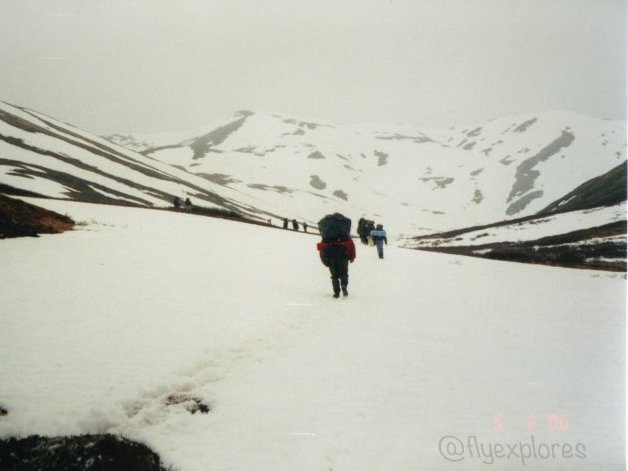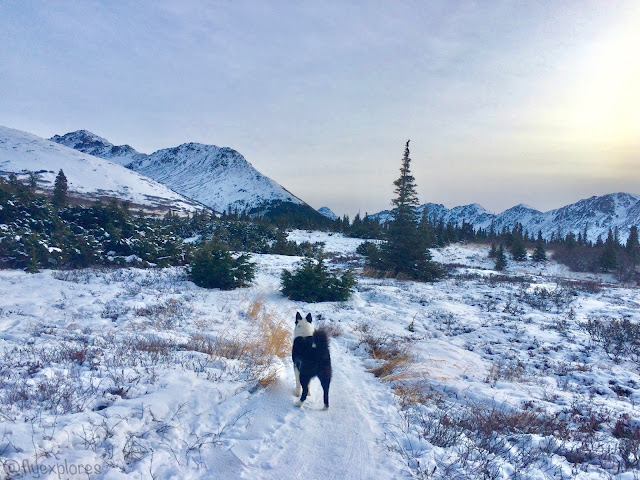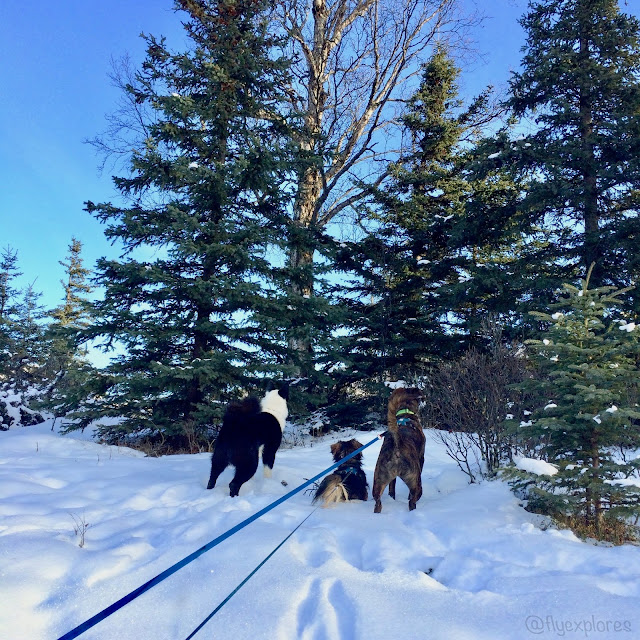Hi there!
It's Trail Tuesday.
One of the hiking trails I have done at least 6 times is
Resurrection Pass Trail. It never
disappoints, if you are someone who is ready for anything. Each time I travel this trail, it is
different: some years there is a ton of snow still in the pass, some years the
streams and bridges are flooded, one year my usual watering hole was dry, it
may snow or rain and be cold or be sunny and warm and dry. You get the picture. The three constants of the trail are: not
many people, it is always beautiful, and there will be bears.
***Bears, have I mentioned yet that I am terrified of
bears? Enter the Karelian Bear Dog (KBD) into my life. But, we will save the whole bear fear and
Karelian love affair for a future post.***
Anyway, back to the trail.
Resurrection Pass Trail, or Rez Trail, is located in Southcentral
Alaska, on the Kenai Pensula. It is a
38-mile thru-hike between Hope and Cooper Landing. It can be hiked in either direction, but I
like to start in Hope, because then I can hike down Devil’s Pass and not up
it. Some folks do it over a weekend, but
I’m not a fast hiker and like to take 4 or 5 days so I can sightsee and take
mini excursions after I set up my tent.
There are 8 public-use cabins along the way that can be rented ahead of
time and at least 19 campsites for tent camping, but you could tent camp
anywhere that suits your fancy, which is what I usually do. Just be sure to use “Leave No Trace”
practices, so things stay nice for future hikers.
The trail is well marked, though basic
navigation skills are handy if there is a ton of snow in the pass and
visibility is low or the trail is obscured.
Don’t let that dissuade you though, really, common sense should serve
you well. There is a parking lot at
either end of the trail, so you’ll need to do some transportation
planning. Don’t plan on having any cell service at any point on the trail – you
may get lucky, but I doubt it.
Okay, ready to hike? Let’s go!
I usually do this hike in June, because any earlier and
there is a good chance of running into deep snow in the pass. The hike starts out in the trees at 300ft
above sea level and road noise is quickly left behind as a forgotten
memory. The birch and evergreen trees are especially
nice and there are a lot of ferns. Be on
the lookout for porcupine.
On that note: I now always carry a little pair of pliers in
my backpack to pull quills out of my dog’s face, or my leg, or whatever. Hiking with quills is not awesome.
There are a number of stream crossings, but unless it’s a
year of flooding, there should be a bridge of some sort.
Then it’s a gradual up and down trek that slowly climbs to
2,600ft at the pass, where the trees are replaced by tundra. If you listen, you will probably hear pika
whistle as they call to alert each other of your presence. The trail follows a shallow snowmelt stream,
so stay to the right, on the slope, and avoid getting your feet wet.
Be prepared for snow in the pass if it was an especially
snowy winter or if spring has been cold. Here's a photo from when I was in high school and a group of us hiked in a ton of snow.
As I mentioned, there are cabins that can be rented. If you’re willing to spend the money, a warm
cabin is awesome after a few days of hiking.
I would recommend a cabin by a lake: either Swan Lake or Juneau Lake,
both are gorgeous.
Now, remember I mentioned bears? Yeah, this is Alaska and there are bears. I’ve seen bears or sign of bears on this
trail each and every year I’ve hiked it.
Be bear aware: have some sort of protection, cook and keep your food
away from where you sleep, and don’t hike in silence. Some people use bells, I hate them, so I just
talk in a normal voice to my hiking partner.
Also, cast an occasional glance behind you as you hike – bears have been
known to stalk follow behind hikers.
I had an especially memorable night with a bear and my KBD on this
trail, but that story needs its own post, stay tuned. There’s a good chance other wildlife could be
spotted as well: sheep, beaver, moose, flocks of birds, and any number of
squirrels.
There is a fantastic series of waterfalls, Juneau Creek
Falls, about 4 miles from the Cooper Landing trailhead. They are the perfect place to spend the last
night, or to stop and have lunch. Day
hikers are likely to be seen on this last stretch of the trail, because of the
falls, but after 5 days in relative solitude, it’s nice to see some people. The trail begins to descend via a series of
switchbacks and the highway can be heard the closer to the trailhead you hike. This part is always bittersweet for me.
Resurrection Pass Trail is a must do, if you like to hike in
the mountains, but don’t necessarily want a steep, super technical trek. The length and variety of scenery make it
very fulfilling. It will always hold a
special place in my heart and I hope you enjoy Rez Trail too!









































